Education is the single greatest transformative force in society. This isn’t just a personal opinion; it’s a truth recognized by power-holders throughout history, who either mass-educated their population or deliberately kept their citizens in the dark.
Consider the contrast between South Korea and Nepal.
Following its independence from Japanese occupation in the mid-twentieth century, South Korea went on a campaign to educate its population and transform its society. Seventy-five years later, its 69.29% tertiary education completion rate makes it the country with the most educated population and, not surprisingly, one of the most developed nations in the world.
Nepal, however, was one of the poorest countries when it opened itself up to the world after the Second World War, and it remained one of the five poorest until at least 2020. The reason is simple: the rulers of Nepal, from its creation in the late 1700s, chose to keep their population—their “subjects”—in the dark.
A History of Elite Monopoly
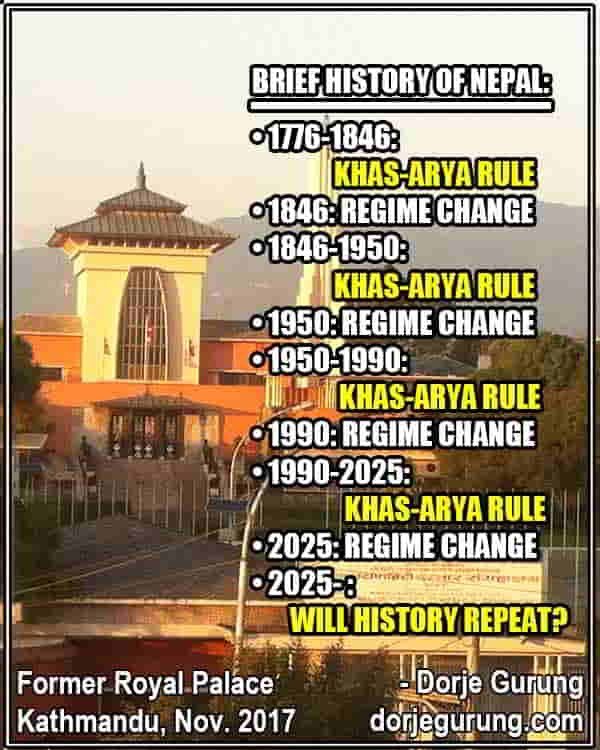
The power structure in Nepal has been dominated by the Khas-arya, who are part of the Tagadhaari, or so-called High Castes and also referred to as the Khas-arya.
Between 1776 and 2025, individuals have occupied the post of the Prime Minister eighty-one times. Apart from just three occasions, the post has been held by an old Tagadhaari man. Even during the country’s experimentation with democracy since 1990, the post has been occupied thirty-one times, and every single one has been an old Khas-arya man, with the exception of the current interim Prime Minister, who is a Khas-arya woman. This monopoly or the disproportional representation extends to every pillar of society: the three branches of the government, the media, the security forces (Army, Police), the bureaucracy, and nearly all cultural, social, economic, and political structures.
The explanation lies in the monstrous and insidious caste system that underpins Nepal’s social structure. This highly patriarchal and stratified system slots every individual into a birth-based category. The Tagadhaaris—the “wearers of the holy thread”—are the so-called High Castes. The system is a product of the Hindu scripture Manusmriti, and it dictates who is knowledgeable, powerful, and therefore entitled to privilege.
The 250-year history of rule by the Khas-arya is characterized by suppression and oppression of non-high-caste populations. They enacted policies to suppress other religions, languages, and cultures while furthering their own. In fact, the Tagadhaaris felt so entitled that when the Rana Oligarchs came on the scene, they legalized the caste system. The 1854 Muluki Ain created a five-tiered society (see image below) where everyone except the so-called high caste was legally discriminated against, with rights curtailed and punishments determined entirely by caste.
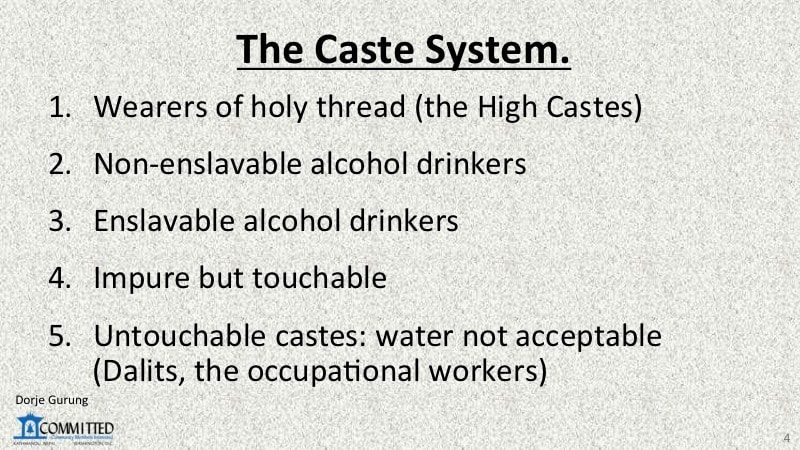
When the Shah autocrats took over in 1950 following the fall of the Rana Oligarchs, people belonging to the same caste came into power. They, too, did what they felt necessary to ensure continued control: they kept the population in the dark, intentionally ensuring the population remained poorly educated.
The Deliberate Lack of Education
The Rana Oligarchs suppressed education to such an outrageous extent that their rule is often referred to as the “Dark Age.” They legally banned those not belonging to the ruling caste from attending schools and colleges.
The 1952−54 Census confirms this reality. The national illiteracy rate was a shocking 94.3%. Furthermore, the data reveals a calculated inequity: while the Kathmandu Valley represented only 5.1% of the population, its residents accounted for the majority (55−57%) of those who had passed the three highest examinations, demonstrating a deliberate, elite-focused education policy.
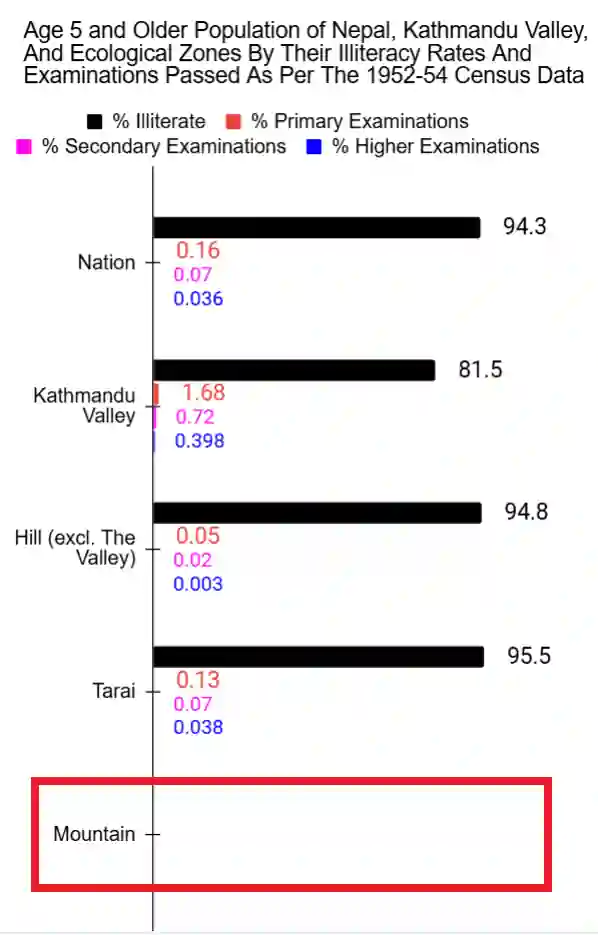
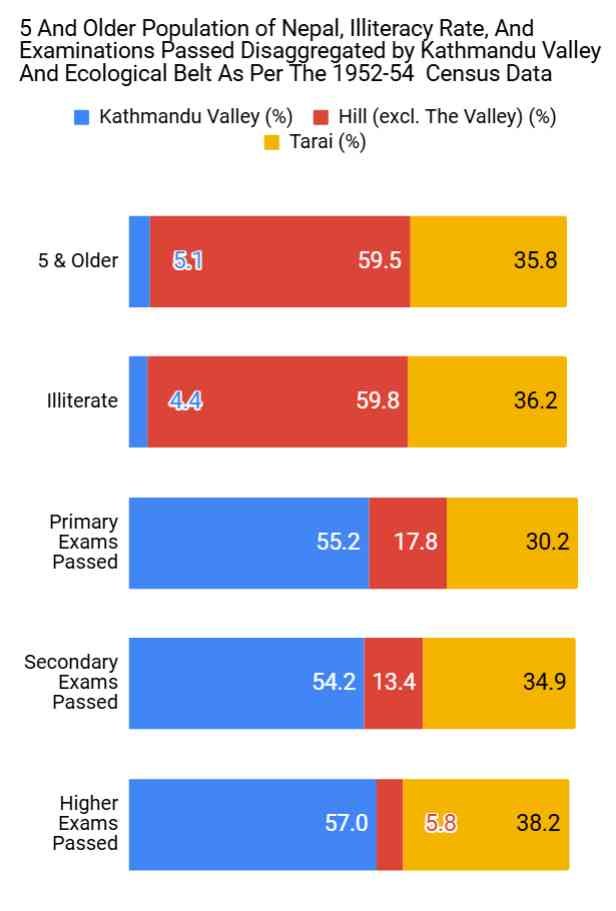
This pattern of deliberate inequity persisted under the Shah autocrats, who ruled for forty years until 1990.
The 1991 Census data shows that those with tertiary education (Graduate and above) represented less than 1% of the population. While they did manage to drop the illiteracy rates, the majority were still illiterate. Furthermore, the massive difference in illiteracy between the Kathmandu Valley elites and the rest of the nation (often 25% or more) shows the strategy remained the same: educating the few to rule the many.
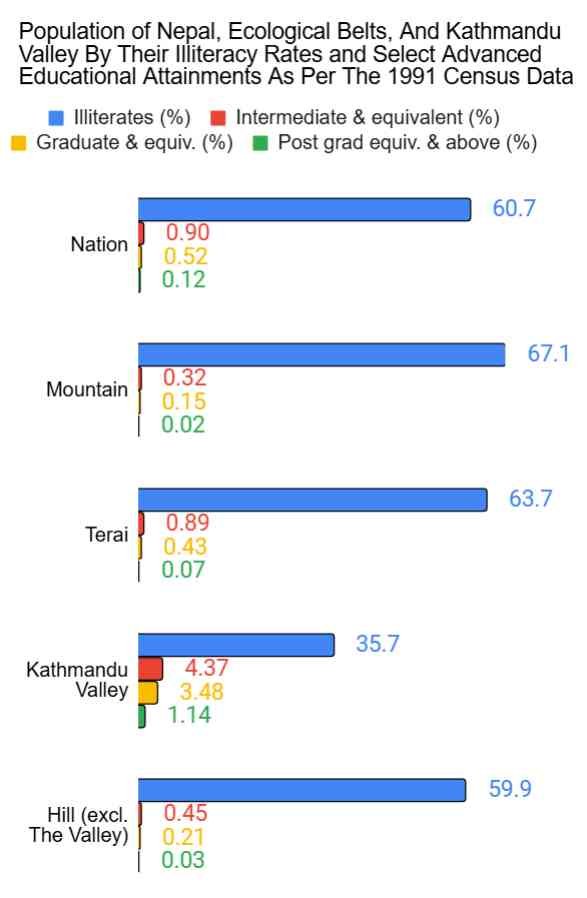
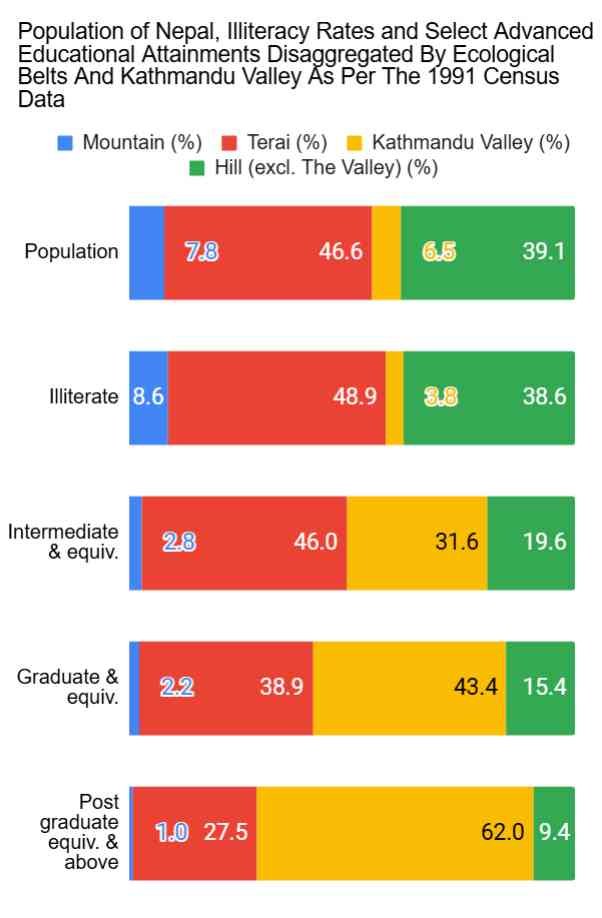
The State of Education Today
The pattern continues even in democratic Nepal. Those in power, belonging to the same caste structure, employ the same playbook: keep the population poorly educated, and control and manipulate them for power and money.
The most recent data speaks for itself. The tertiary education completion rate stands at a mere 5.2% (for ages between 25 and 64, it’s 8.15%). Contrast that to the world average of 28% and South Korea’s 69.29%. Let alone tertiary education—the rate of illiteracy is so high among electorates–44.7% in the 40-64 age group and 72.9% in the 65+ age group as per the 2021 census data–that Nepalis vote for symbols in elections!
Once again, evidence shows that democratic governments did little to address the geographic inequity: the proportion of Kathmandu Valley residents with tertiary education is three or more times greater than their proportion of the population. Nepal is simply not producing the skilled workforce needed in the twenty-first century.


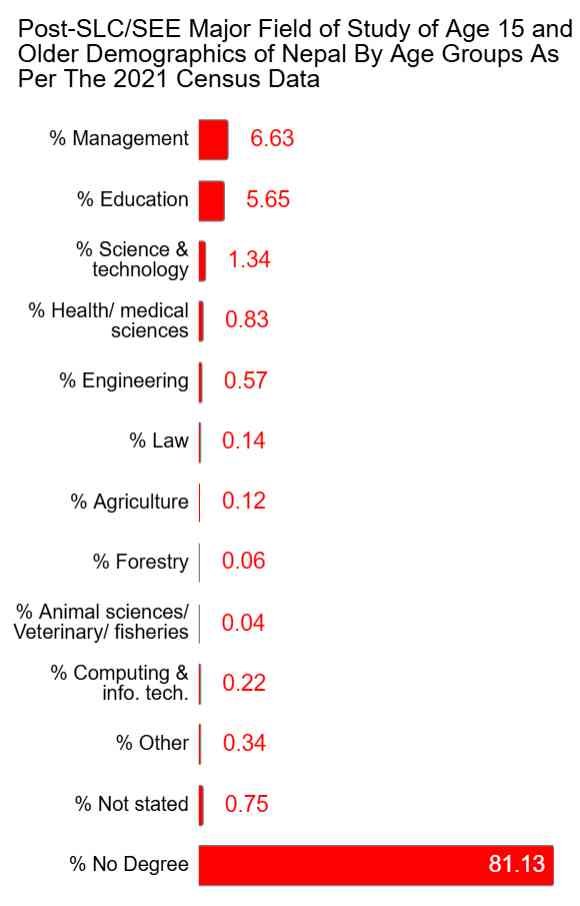
The True Cost of Ignorance
Nepal does not have a dearth of citizens who take pride in claiming their country was never colonized. This is a claim South Koreans cannot make. What they can claim is far more valuable: they were educated enough to chart their own destiny and, in seventy-five years, become one of the most developed nations in the world.
Because they prioritized education, South Koreans can claim something else entirely: they have avoided internal colonization—a form of subjugation that Nepal has suffered for its entire history. The ruling elite successfully kept the majority uneducated, and therefore, unaware.
Nepalis have been brainwashed into blind patriotism, into taking pride in symbols (Everest, the flag, the Nepali cap), and into living in denial of the caste system, rarely questioning who benefits from this manufactured “unity in diversity” and belief in “social harmony.”
The likelihood of yet another group of Khas-aryas taking their turn at ruling the country, exploiting the population, and extracting resources for personal gain is very high. The reason? The extremely low level of education, which translates not only to a low level of awareness of the country’s long casteist history but also to a limited ability and resources to take meaningful action to prevent this cycle from continuing. Furthermore, though the ruling elite’s victims far outnumber its beneficiaries, the small, select group who have become politically powerful and benefit from its continued dominance possesses a capacity to organize and mobilize that is not matched by their victims.
My hope, however, is that the necessary effort, organization, and number of people required to prevent history from repeating itself will emerge. If they do, and I am indeed proven wrong, there won’t be a happier Nepali in the world. I truly hope I am proven wrong.
Regardless, for the New Nepal to break the cycle of its 250+-year casteist history and achieve real progress—economically, culturally, socially, and politically—it must make the following its top five priorities::
- Education
- Education
- Education
- Education
- Education
What do you think?
PS. I got help from The Google AI Gemini in composing this blog post.
October Update. The educational attainment charts for Provinces based on the 2021 census data have been replaced with those for Ecological Belts for better comparison.
Additional Reading
The following are about the major structural issues Nepal suffers from–who started it, how, and why–their legacies and how to fight it.
- Nepal’s Shah Monarchy DELIBERATELY Entrenched Structural Discrimination And Systemic Casteism
- Legacies of Shah Monarchy’s Structural Discrimination And Systemic Casteism in Nepal
- How to Fight Legacies of Monarchy-Entrenched Structural Discrimination And Systemic Casteism For a More Just And Equitable Nepal
One of the most devastating legacies of all that is the very strong institution of corruption. Not surprisingly, corruption is so entrenched and widespread that the most powerful in the country have been implicated in multiple corruption scandals. Follow the links below for the details.
- AI DeepSeek “The Dual Legacy of K.P. Sharma Oli: Strongman Rhetoric and a Tidal Wave of Scandal”
- AI DeepSeek “The Enduring Enigma: Sher Bahadur Deuba’s Legacy of Power and Perennial Scandal”
- AI DeepSeek “From Revolutionary to Kleptocrat: The Paradox of Pushpa Kamal Dahal ‘Prachanda’”

